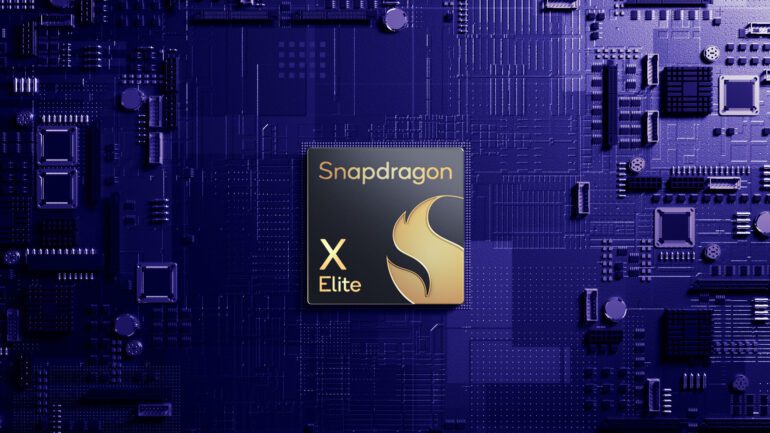TL;DR:
- Qualcomm unveils Snapdragon Elite X chip for Windows laptops, set to launch in 2024.
- Claims faster performance than Apple’s Mac chips in specific tasks.
- Redesigned for enhanced AI capabilities, including email summarization, text generation, and image creation.
- AI features extend to Qualcomm’s smartphone chips, with Google and Meta on board.
- Responds to Microsoft’s push for AI-focused chips in Windows.
- Microsoft CEO Satya Nadella hails the era of “AI PCs.”
- Qualcomm aims to challenge Apple’s market dominance.
- X Elite chip outperforms Apple’s M2 Max in select tasks and boasts superior energy efficiency.
- Can handle AI models with 13 billion parameters.
- Growing demand for AI-capable laptops in various industries.
Main AI News:
Qualcomm has unveiled its latest innovation: the Snapdragon Elite X chip. Scheduled for release in 2024, this cutting-edge chip is set to revolutionize the realm of Microsoft Windows-based laptops. With the promise of outperforming Apple’s Mac computer chips in specific tasks, Qualcomm’s latest offering is causing ripples of excitement in the tech industry.
The Snapdragon Elite X chip has undergone a meticulous redesign, priming it to excel in handling artificial intelligence (AI) tasks. This includes but is not limited to functions like summarizing emails, generating text, and creating images. The integration of AI features is a forward-looking strategy that extends beyond laptops, as Qualcomm’s commitment to AI extends to their smartphone chips. Tech giants Alphabet’s Google and Meta have enthusiastically pledged their intent to leverage these AI capabilities.
This monumental announcement comes hot on the heels of a recent report by Reuters, which revealed that Microsoft had actively encouraged semiconductor leaders like Qualcomm, Nvidia, and Advanced Micro Devices to craft innovative chips tailored for the burgeoning demands of AI within the Windows ecosystem—the world’s most prevalent PC operating system.
During Qualcomm’s event, Microsoft’s Chief Executive, Satya Nadella, made a pivotal appearance, heralding the advent of what he referred to as “AI PCs.” These next-generation computing devices, powered by Qualcomm’s visionary chip architecture, are set to redefine the way businesses and consumers interact with technology. “The work we’re doing together,” Nadella emphasized, “is going to bring together these experiences that cannot be done without a new system architecture.”
Notably, Qualcomm has positioned itself as the first contender to challenge Apple’s market dominance. Apple’s custom-designed chips, introduced in 2020, have steadily augmented their market share in the laptop and desktop computer domains. Qualcomm’s assertion that the X Elite chip outpaces Apple’s M2 Max chip in certain tasks while maintaining superior energy efficiency vis-a-vis Apple and Intel PC chips underscores its potential to disrupt the status quo. Nevertheless, the standout feature of the X Elite chip lies in its capacity to handle artificial intelligence models boasting a staggering 13 billion parameters—a metric denoting the sophistication of AI systems generating text or images.
Francis Sideco, a distinguished analyst at TIRIAS Research, envisions a compelling future where AI’s transformative power extends to diverse applications. With companies like Adobe enabling the use of AI for generating images in realms ranging from real estate brochures to beer can labels, there is an undeniable surge in demand for laptops equipped with AI capabilities. “You’ve got a lot of smaller businesses and individual designers and creators using these devices,” Sideco noted. “They need that kind of capability.“
Conclusion:
Qualcomm’s unveiling of the Snapdragon Elite X chip represents a significant milestone in the tech industry. With its enhanced AI capabilities, competitive performance metrics against Apple, and the potential to cater to the rising demand for AI-driven applications, this chip is poised to usher in a new era of AI-enabled computing devices. It not only challenges Apple’s market dominance but also aligns with the evolving needs of businesses and creators who rely on AI for diverse tasks. This development signifies a transformative shift in the market, one where AI and computing seamlessly converge to empower users across various industries.

